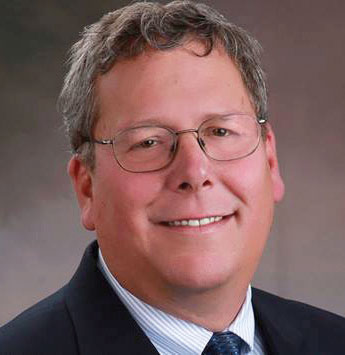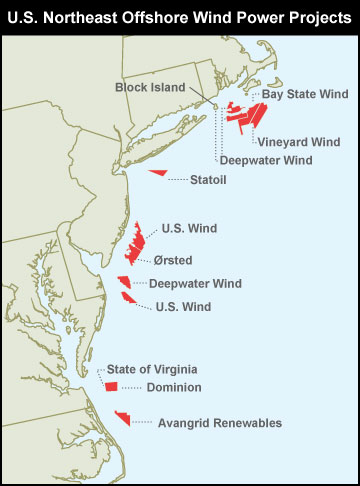Big promise
Port Development Risks
After years of false starts, America’s offshore wind power industry is revving up. Developers are unveiling projects up and down the eastern seaboard, as state governments clamor to structure power sharing agreements that would provide the financial foundation for the industry.
“They’re establishing a pipeline of offshore wind projects basically from now through at least 2035,” said Richard Baldwin, principal consultant for Ramboll, the engineering, design and consultancy company.

Onshore infrastructure to support these wind farms is critical. Specialized supply chains must be structured, and soon.
“It’s critically important that infrastructure gets developed alongside market creation,” said Liz Burdock, the CEO and president of the Business Network for Offshore Wind, a Washington-based nonprofit dedicated to advancing the industry.

Added Baldwin: “It’s going to be logistics, logistics, logistics.”
These supply chains are centered on specially designed, purpose-built ports, or dedicated terminals within larger port boundaries. Because of the immense size of offshore wind components and the complexities of wind farm construction, utilizing current port facilities and sharing them with other maritime commerce will be difficult, if not impossible. Even after the wind farms are constructed, facilities will be needed for ongoing monitoring and repair.
Specialized Port Boom
Indeed, specialized ports can become the focal point of this fast-growing industry. They can provide not just the staging of the wind farms, but host everything from maintenance and warehousing, to testing and training. A few will encompass manufacturing facilities as well.
Bruce Carlisle, senior director for offshore wind at the state development agency, the Massachusetts Clean Energy Center, breaks down this infrastructure in three ways:
- The staging, marshaling and deployment, where components of the wind turbine are brought into the port, prepped and then loaded on either installation vessels or barges to transport them to the offshore site.
- Ongoing operations and maintenance, which can include everything from hosting crew transfer vessels to spare parts.
- Component manufacturing onsite, which provides easier and more economical access to the wind farms themselves. These dockside facilities will become more and more necessary as the turbines grow in size and weight and the offshore wind industry in the US grows. (The latest generation offshore wind turbines churn out 8MW or 10MW each. However, a new generation is fast approaching. GE is now erecting a prototype 12MW turbine in the port of Rotterdam, which will tower more than 850 feet high, with each blade weighing 35 tons. Fifteen MW and even 20MW turbines are now in the planning stages.)
“There’s going to be very significant both direct and indirect induced supply chain and economic benefits and workforce opportunities from these projects,” said Carlisle.

The industry talks about the levelized cost of energy (LCOE). This takes into account everything from wind speed to cost of components. So, most obviously, a more powerful turbine costs more, but its added production more than offsets that initial outlay. Fewer turbines are necessary to produce the anticipated power.
Infrastructure is definitely part of the LCOE equation. A state-of-the-art, efficient port facility can translate into an overall 5% savings on the cost of offshore wind, according to estimates by Wind Europe, the Brussels-based wind industry policy group.





